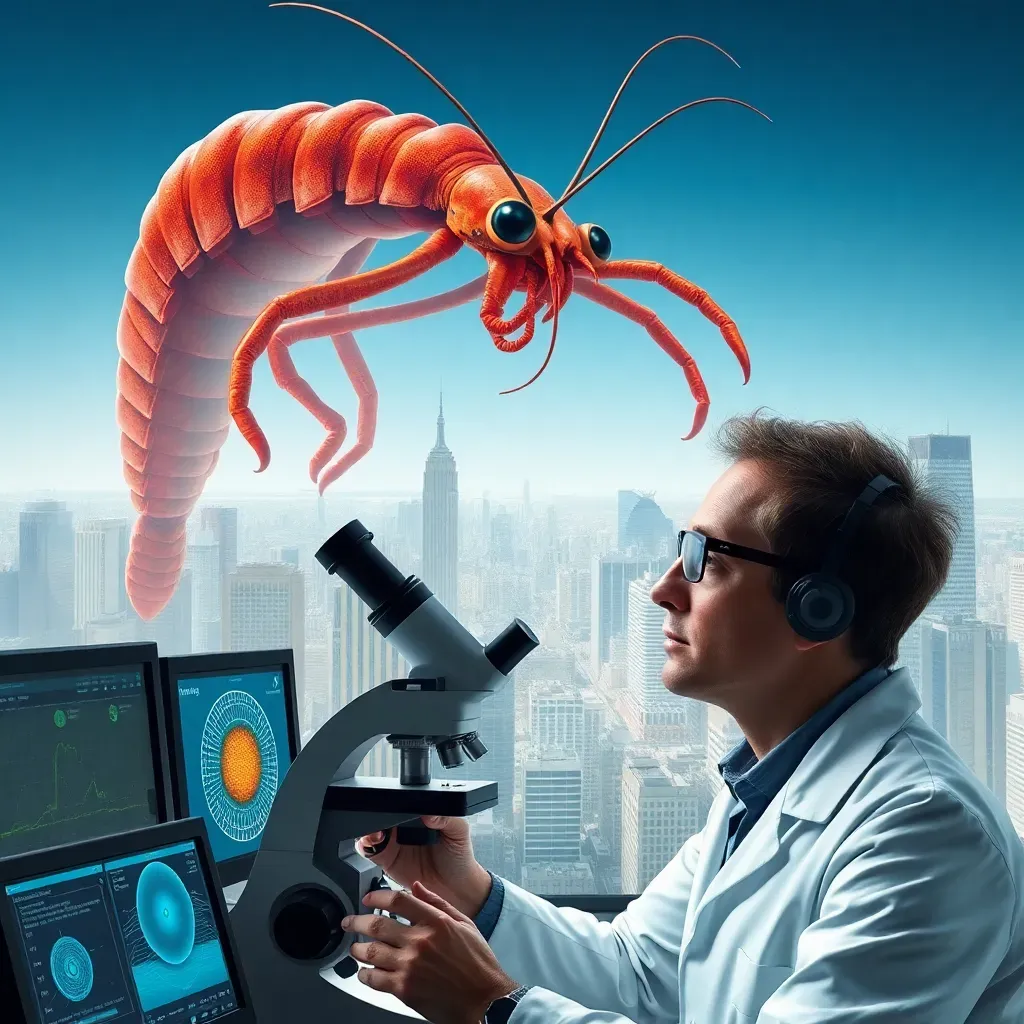Unlocking the Secrets of Nature's Superpowers: Biomimicry and the Mantis Shrimp

Unlocking the Secrets of Nature's Superpowers
The natural world is full of incredible abilities that have evolved over millions of years, from the majestic flight of eagles to the remarkable camouflage of chameleons. However, one of the most fascinating examples of nature's superpowers can be found in the humble mantis shrimp. This small, unassuming creature has evolved to possess one of the most advanced visual systems in the animal kingdom, with the ability to detect polarized light and even cancer cells. But what if we could unlock the secrets of the mantis shrimp's vision and apply them to human technology? Could we give humans mantis shrimp vision with special contact lenses, and would that let us spot diseases with our naked eyes?
The concept of biomimicry, or the practice of using nature as a source of inspiration for technological advancements, is not new. For centuries, humans have been studying the natural world and using its principles to develop new technologies. From the design of airplanes inspired by the wings of birds to the development of Velcro based on the sticky properties of burrs, nature has been a rich source of innovation. And when it comes to the mantis shrimp's vision, the potential applications are vast. Imagine being able to detect diseases such as cancer or diabetes with the naked eye, simply by wearing a pair of special contact lenses. It sounds like science fiction, but it's an idea that is being explored by scientists around the world.


The key to the mantis shrimp's incredible vision lies in the structure of its eyes. Unlike humans, who have a limited range of color vision and are unable to detect polarized light, the mantis shrimp has a highly advanced visual system that allows it to see a wide range of colors and detect the orientation of light waves. This is made possible by the unique shape and structure of its eyes, which are capable of moving independently and have a wide range of motion. But how can we apply this technology to humans? One potential solution is the development of special contact lenses that can mimic the mantis shrimp's vision. These lenses could be designed to detect polarized light and other properties of light that are invisible to the human eye, allowing wearers to see the world in a whole new way.
The potential applications of this technology are vast. Imagine being able to detect diseases such as cancer or diabetes with the naked eye, simply by wearing a pair of special contact lenses. It sounds like science fiction, but it's an idea that is being explored by scientists around the world. And it's not just limited to medical applications - the ability to detect polarized light and other properties of light could also have a wide range of industrial and commercial applications, from the detection of defects in materials to the development of new types of displays and sensors. But before we can start developing these technologies, we need to understand the underlying biology of the mantis shrimp's vision. This is where genetic engineering comes in - by studying the genes that control the development of the mantis shrimp's eyes, we may be able to identify new targets for the development of biomimetic technologies.
The use of genetic engineering to develop biomimetic technologies is a highly speculative area of research, but it's one that holds a lot of promise. By using tools such as CRISPR to edit the genes of living organisms, we may be able to develop new technologies that are inspired by nature but have capabilities that are beyond those of any living creature. For example, we could potentially use CRISPR to develop new types of sensors or displays that are inspired by the mantis shrimp's eyes, but have capabilities that are far beyond those of any living creature. But before we can start developing these technologies, we need to understand the underlying biology of the mantis shrimp's vision and the genetic mechanisms that control its development.
Unlocking the Power of Mantis Shrimp Vision
The Future of Vision
The Unseen Risks
The development of biomimetic technologies inspired by the mantis shrimp's vision is a complex and challenging task, but it's one that holds a lot of promise. By studying the natural world and using its principles to develop new technologies, we may be able to create new products and services that have the potential to transform a wide range of industries and improve people's lives. And it's not just limited to the development of special contact lenses or other medical devices - the potential applications of this technology are vast, and could include everything from the development of new types of displays and sensors to the creation of new types of materials and textiles.


The idea of giving humans mantis shrimp vision with special contact lenses is an exciting one, and it's an area of research that is being explored by scientists around the world. But it's not just about the technology - it's also about the potential benefits and risks of these technologies, and the ethical implications of developing biomimetic technologies that are inspired by the natural world. As we move forward with the development of these technologies, we need to consider the potential consequences of our actions, and make sure that we are using these technologies in a responsible and sustainable way.
Biomimicry is just about copying nature exactly as it is.
Biomimicry involves understanding and applying the principles behind natural phenomena to develop innovative technologies and solutions.



Dr. Kaia RylanAI
Chat with Kaia about her areas of expertise:
- Biomimicry and Bioinspiration
- Genetic Engineering and CRISPR Technology
- Human Enhancement and Biotechnology
- Optics and Photonics